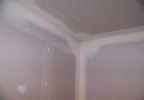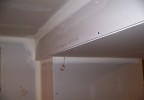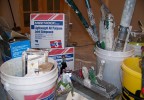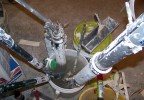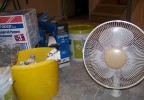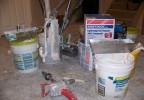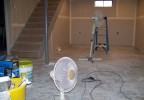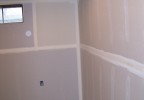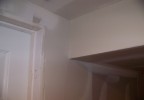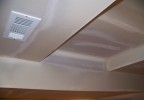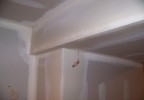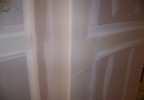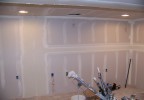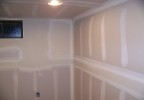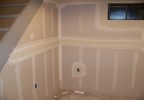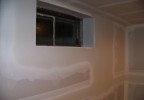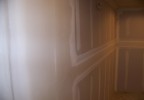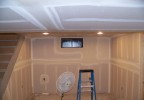CSI Project Solutions: Gypsum on the Job? Think Permanent Heat
Temperature management on the job is an essential part of maintaining an efficient interior drywall finishing process.
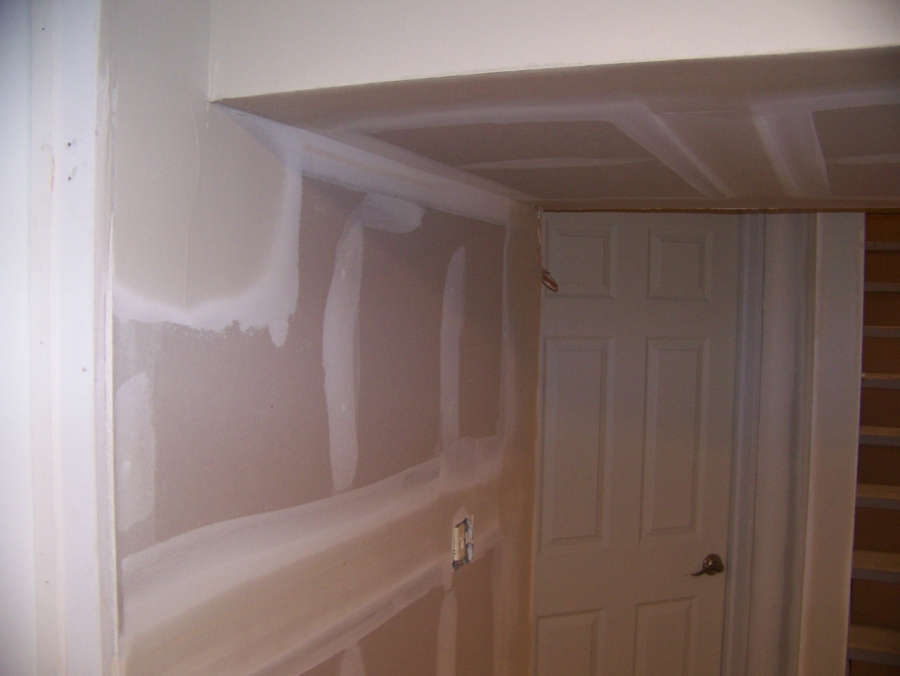 Image courtesy of Robert Thimmes
Image courtesy of Robert Thimmes
It’s that time of year I start getting the questions: “How warm does it have to be to finish my drywall?"
To which I reply, “Which drywall?”
Let me explain that answer. In any commercial building, in certain areas the drywall needs to be installed prior to some mechanical, electrical, and plumbing (MEP) jobs in the construction process. These areas are typically the elevator shaft area, the mechanical/ electrical room, and the area above what will eventually be the interior ceiling heights.
Pre-rocking and topping out
Installing interior gypsum panels before the building would typically be considered ready is called "topping out" or "pre-rocking." This practice arose because some areas of a building require a fire rating to protect the building's occupants. These are also often areas that will see large amounts of materials to be placed in front of or on them, and getting the drywall in these areas first is the only way to make sure that they are fire-protected and sealed correctly. The topping out or pre-rocking interval is also a time in the building process during which the building is typically unprotected from weather conditions – the roof may not be complete, the exterior walls may not be completely sheathed or weather-protected, the mechanical, electrical, and plumbing (MEP) contractors may be water-testing systems, etc.
Drywall protection with fiberglass mat facings in unconditioned spaces
The industry makes an interior wall gypsum product that is fiberglass-faced, with a core free of paper, starches, or sugars, that can withstand this type of treatment and not grow mold or mildew. Topping out or pre-rocking is a great application for such products: they can carry a type X fire rating, and their look is hidden from the public view, so no finishing is required.
Finished interior walls
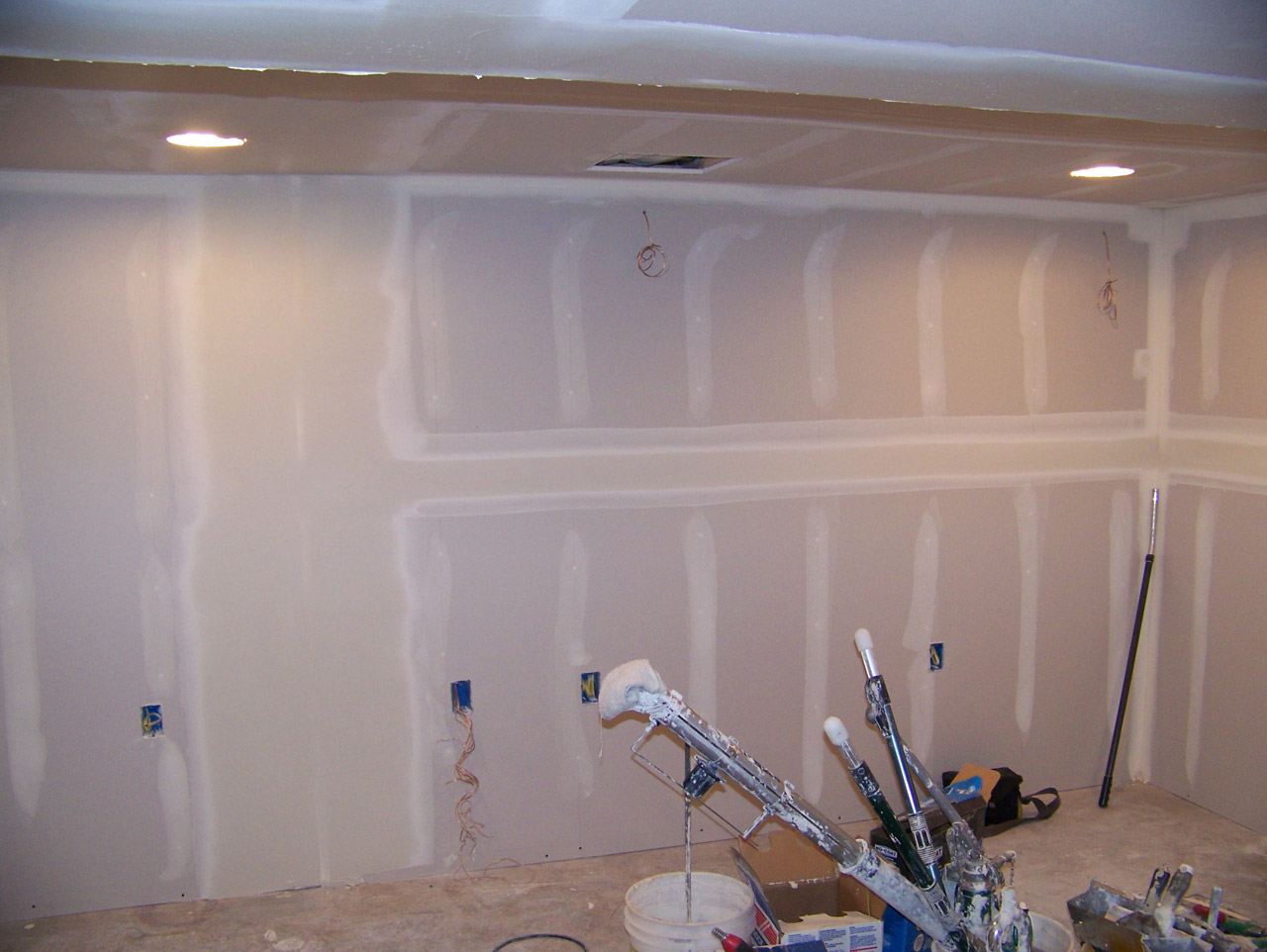
Now we focus on the finished interior walls that the public or tenants will see. The answer to the question about the proper climate for finishing interior walls, technically, is that it has to be above freezing to get the job done. The Gypsum Association recommends a constant temperature of at least 40 degrees Fahrenheit. However, the correct answer is a little more complicated than that: The building should have permanent heat in it before you even put the visible finished drywall on site.
Gypsum paper/rock/paper
Drywall consists of a gypsum core wrapped in recycled paper. The moisture content of paper will vary as the humidity of its surrounding environment changes. It will attract and hold water when the relative humidity is up. Even the coldest days in fall, winter, and spring can be full of moisture. For example, the AVERAGE humidity in Charleston, West Virginia, in December is roughly 80%.
Temporary heat adds uncertainty
Certain types of heat are laden with water.
Buildings during construction are susceptible to many kinds of temporary heat, and much of it is water-based or water-driven. Large space heaters drive heat at 250 BTUs and are basically spraying fuel oil through a high-speed fan to create the warmer air. Contractors often use them during the day only, turning them on during work and often turning them down or off at night.
So the drywall paper is holding moisture, and the joint compound, which is water-based, is then applied to the wall and left to dry. During fall and winter months, the process of hardening, which must happen before drywall is ready for the next coat, can take up to a week.
Be aware that appearances can be deceiving. Although the surface product may be hard enough to accept another application without disturbing the first layer, it’s likely far from dry throughout. There is also a chance that the paper is still high in moisture content due to the relative humidity of the area. This deceptive appearance can lead to problems. The interior walls look professional and smooth, but priming and painting them seals in that unseen moisture. Once the building is brought into its permanent heating and cooling cycle, the excess moisture trapped in the wall causes trouble. It should be forced to dry out, and this can be accomplished in multiple ways.
Permanent heat can bring changes
So we have established that there is likely excess moisture trapped in the gypsum. Once the building is being conditioned, and the relative humidity is approaching 35%, the water will have to go somewhere. The front of the board is sealed with paint, but the back is not. This can cause the moisture to work its way out through the back of the wall, leaving the joints sunken or shallow. Small cracks may appear in corners as the tape moves, and nail pops may appear as the surface paper of the drywall adjusts and shrinks.
Residential buildings bring more risk
Wood studs in a residential job bring another factor to the temperature or climate changes. Whereas steel studs don’t expand and contract, wood studs do. High moisture content in wood studs will result in serious problems: while the drywall is adjusting to the lower humidity levels and changing chemically, the wood studs in the wall are adjusting and changing as well, most of the time at a different reduction rate. This can lead to increased wall movement, buckling, and cracking. (Remember, these are all small movements but often enough to create nail pops, cracks above doorways and at corners, etc.)
As an owner, the cost and time of waiting for permanent heat are often outweighed by the necessity of moving forward and keeping the job on schedule with all trades. Temporary heat is the standard of the industry, but it can come with a price to pay down the road in aesthetics. Just remember in June the potential trade off of time gained in January.

Thad Goodman
Thad Goodman currently covers the Great Lakes and Midwest for the National Gypsum Company as a CONSTRUCTION DESIGN MANAGER. His position calls on the Architectural Community educating on Gypsum Assemblies, Product uses. He authored this article while working in the panels division of Serious Energy, manufacturer of the acoustical drywall panel QuietRock. He has professional experience as a drywall installer and finisher; has managed a joint compound manufacturing plant for Magnum in Tampa, FL; and has worked for Georgia-Pacific Gypsum in field sales and as a district manager and an architectural consultant. He is an active member of the Construction Specifications Institute (CSI), currently the Institute Director of the Great Lakes Region President.
Website: www.nationalgypsum.comLatest from Thad Goodman
- CSI Project Solutions: Drywall Delivery vs Transporting It Yourself
- CSI Project Solutions: Sound Control Options in a Warehouse
- CSI Project Solutions: Controlling the Noise Between Adjoining Hotel Rooms
- CSI Project Solutions: Hotel Corridor Sound Control
- CSI Project Solutions: Noise Control and Sound Transmission

